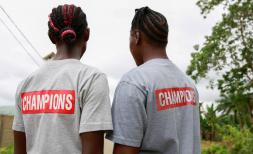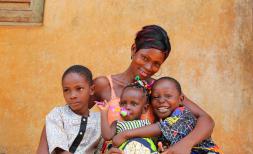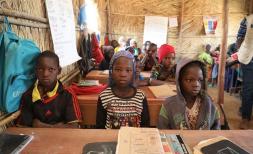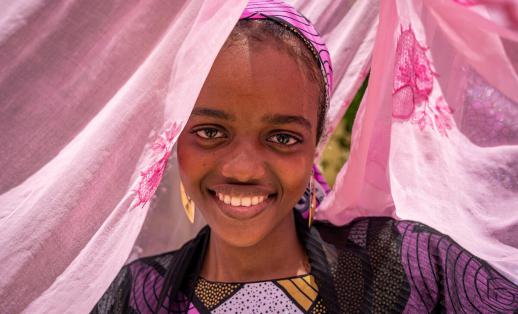Here’s how we can guarantee education for every refugee child
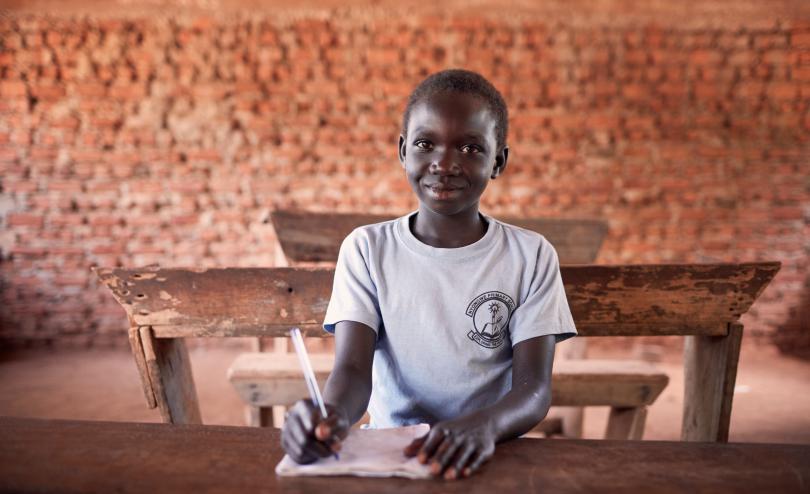
Despite promises to the contraryhalf of the world’s refugee children – 3.7 million – are not in school. It’s time to agree a plan backed by the necessary funding to give them all an education.
The latest figures from the UN refugee agency, released this week, show yet another increase in the number of people who’ve been forced to leave their homes seeking protection from violence or persecution.
There are now 25.4 million refugees, 2.9 million more than in 2016 and the largest increase UNHCR has ever seen in a single year.
More than half of the world’s refugees are children and some 3.7 million of them have not only lost their homes but their opportunity to go to school. Why is that?
Discrimination and deliberate exclusion have played a part. And refugee education has long struggled to draw attention on the global stage, caught between opposing perceptions of the refugee crisis as a short-term “humanitarian” problem and education as a long-term “development” solution.
People who have fled their country don’t care about the technicalities of the aid system – they’ve heard enough excuses. They just want to send their kids to school. As well as offering hope, knowledge and skills for the future, education provides a safe space, a sense of normality and protection – from conflict but also from trafficking, child marriage, sexual exploitation and forced labour, to which refugee children are particularly at risk.
It doesn’t have to be this way and this year poses some real opportunities to unlock education’s unique power to help refugees – but only if we nail down exactly how we are going to do it and where the money is going to come from.
Our costed plan
In our new report ‘Time to act’, Save the Children proposes a global plan of action to get every refugee child into school. It shows that we could deliver quality universal pre-primary, primary and secondary education to the world’s refugees for $21.5 billion over five years or $575 per child per year.
Countries hosting refugees perform a global public good for the international community as a whole and should be supported in doing so. However, not all countries require the same level of support, so our costings propose different levels of support for refugee education in line with national capacity.
Low-income countries receive 95 per cent of the required amount, lower middle-income countries 80 per cent and upper middle-income countries 40 per cent.
Applying this formula, $11.9 billion would be needed in international assistance or $4.3 billion per year. To put this into perspective this year’s World Cup has cost $11 billion to stage, so although the figures look large they represent a relatively modest investment which could reap massive benefits.
In addition to much needed investment, our proposal calls for policy and practical change to include refugees in the education systems of their host countries and concerted efforts to improve the quality of learning on offer.

Inclusion of refugees in national systems
Including refugee children in the education system of their host country is the most practical and sustainable way to provide displaced children with accredited and certified learning opportunities that can be monitored for quality.
Some countries lack the necessary resources and political will to make this happen, and some even take political decisions to obstruct the education of certain groups. Of the 25 hosting countries regarded as highest priority by the UN refugee agency, UNHCR, only 16 allow refugees full access to their education systems at primary and secondary level.
Improving the quality of education on offer
Improving the quality of refugee education is also crucial. Many refugee children are receiving mediocre education. This is jeopardising their development, learning and well-being, and leading to high dropout rates.
The education needs of refugee students are complex. They may have already missed years of schooling and may be unfamiliar with the local curriculum and language of instruction. Many displaced children have experienced severe trauma and require psychological support. Girls are disproportionately affected by crises. Refugee girls – particularly adolescents – are two and a half times more likely to be out of school.
Investment
Investing seriously in refugee education is a vital global obligation that has long been neglected – in part because of the deadly artificial divide between humanitarian and development aid. Many of the education systems in the ten countries that host the most refugees are weak and receive little support from the international community. In just two of these countries did education receive more than 2 per cent of humanitarian financing in 2016. This level mirrors the humanitarian sector in general, where only 2.7 per cent is directed to education.
Despite the lack of funding for education in emergencies there are some promising developments. The EU is committed to spend 10 per cent of its humanitarian budget on education and Education Cannot Wait is now up and running and is supporting the development and funding of multi-year education programmes in emergency and refugee situations.
‘Time to act’ identifies opportunities to tap into new sources of finance and sets out how donors and the international aid architecture can prioritise the needs of refugee children more effectively.

The time to act is now
We share a collective obligation to the 3.7 million refugee children who are not in school. Having already lost their homes, they are now losing their education. They are not responsible for the conflict that has driven them out of their country. And they have a legal right to an education – a right that doesn’t end in times of emergency.
We’re confident that it is possible to provide a quality education to every last refugee child. The Global Compact on Refugees offers a unique opportunity to realise this vision. The futures of millions of children are depending on us to stop prevaricating. We have to make sure that becoming a refugee doesn’t mean losing the right to get an education.

